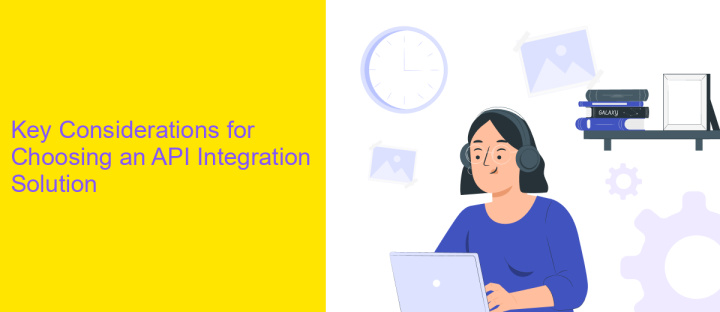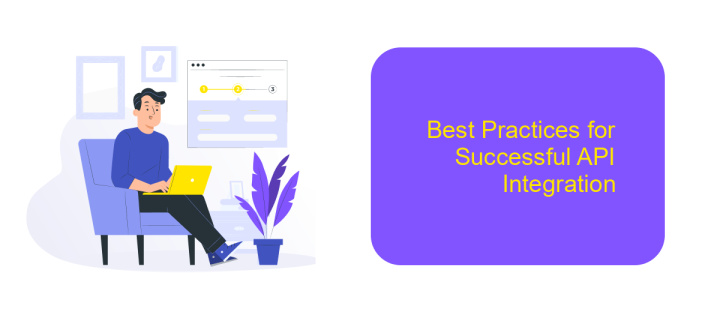Best API Integration Solutions
In today's fast-paced digital landscape, seamless API integration has become crucial for businesses looking to enhance their operational efficiency and customer experience. The right API integration solution can streamline processes, improve connectivity, and foster innovation. This article explores the best API integration solutions available, highlighting their features, benefits, and how they can transform your business operations by bridging the gap between disparate systems.
Understanding API Integration and its Benefits
API integration is a crucial aspect of modern software development, enabling different systems and applications to communicate seamlessly. By using APIs, businesses can enhance their digital services, improve user experiences, and streamline operations. APIs act as bridges, connecting various software components and allowing them to work together efficiently. This integration is vital for creating scalable and flexible digital solutions that can adapt to changing business needs.
- Enhanced connectivity: APIs allow different systems to share data and functionality, improving interoperability.
- Increased efficiency: Automating processes through API integration reduces manual tasks and errors.
- Scalability: Businesses can easily expand their digital services by integrating additional APIs as needed.
- Cost-effectiveness: Leveraging existing APIs can reduce development time and costs.
- Improved user experience: Seamless integration ensures a cohesive and intuitive user journey.
Overall, API integration is a powerful tool for businesses seeking to innovate and remain competitive in the digital landscape. By leveraging APIs, companies can quickly adapt to market demands, enhance their service offerings, and provide superior customer experiences. As technology continues to evolve, the importance of effective API integration will only grow, making it an essential component of any successful digital strategy.
Key Considerations for Choosing an API Integration Solution

When selecting an API integration solution, it's crucial to evaluate the compatibility with existing systems. This involves checking whether the solution can seamlessly integrate with your current software and platforms, ensuring smooth data flow and minimizing disruptions. Additionally, consider the scalability of the solution. As your business grows, your integration needs may evolve, so it's important to choose a solution that can expand alongside your operations without requiring significant overhauls.
Security is another vital consideration. Ensure that the API integration solution adheres to industry standards for data protection and privacy. Look for features such as encryption and authentication protocols to safeguard sensitive information. Furthermore, consider the ease of use and support offered by the provider. Solutions like ApiX-Drive offer user-friendly interfaces and robust customer support, making it easier for businesses to set up and manage integrations efficiently. Lastly, evaluate the cost-effectiveness of the solution, balancing upfront costs with long-term benefits and support services to ensure it aligns with your budget and business goals.
Top API Integration Platforms and Tools

In the ever-evolving digital landscape, API integration platforms and tools have become indispensable for businesses looking to enhance connectivity and streamline operations. These solutions enable seamless communication between different software applications, fostering innovation and efficiency.
- MuleSoft Anypoint Platform: Known for its comprehensive approach, MuleSoft provides robust API management and integration capabilities, supporting both on-premise and cloud environments.
- Zapier: A user-friendly tool that allows non-developers to connect apps and automate workflows effortlessly, making it ideal for small to medium-sized businesses.
- Postman: Widely recognized for API testing, Postman also offers collaboration features, making it a versatile tool for developers working on API integrations.
- Apigee: Part of Google Cloud, Apigee provides advanced API management solutions that help businesses design, secure, and scale their APIs effectively.
- IBM API Connect: A comprehensive solution that offers API creation, management, and socialization, with strong security features for enterprise-grade integrations.
These platforms and tools cater to various needs, from simple automation tasks to complex enterprise-level integrations. By leveraging the right solution, businesses can improve their operational efficiency and accelerate their digital transformation journey.
Best Practices for Successful API Integration

Successful API integration is a crucial aspect of modern software development, enabling seamless communication between different applications. To achieve this, it is essential to plan and execute the integration process carefully. Start by understanding the API documentation thoroughly, as it provides valuable insights into the API's capabilities and limitations.
Next, ensure that your integration is secure and reliable. Implement authentication mechanisms such as OAuth or API keys to protect sensitive data. Additionally, consider rate limiting and error handling to maintain system stability and prevent overloading the API.
- Thoroughly test the integration in a staging environment before deploying it to production.
- Keep the API versioning in mind to avoid breaking changes in the future.
- Regularly monitor API performance and set up alerts for any anomalies.
- Maintain clear and concise documentation for your integration process.
Finally, establish a feedback loop with the API provider. Regular communication can help resolve issues quickly and keep you informed about any updates or changes to the API. By following these best practices, you can ensure a smooth and effective API integration, enhancing the functionality and reach of your application.


Future Trends in API Integration
As the digital landscape evolves, API integration is poised to become even more integral to business operations. One emerging trend is the use of AI-driven tools to automate and optimize API interactions, allowing businesses to streamline processes and reduce the need for manual intervention. These intelligent systems can predict potential issues and suggest optimizations, leading to more efficient and reliable integrations. Additionally, the rise of low-code and no-code platforms is democratizing API integration, enabling non-technical users to set up and manage integrations with ease. This shift is empowering a broader range of employees to contribute to digital transformation initiatives.
Another significant trend is the increasing emphasis on security and compliance in API integrations. As data privacy regulations become more stringent, businesses are prioritizing secure data exchange and compliance-ready solutions. Services like ApiX-Drive are at the forefront of this movement, offering robust tools that ensure secure, compliant, and efficient API integration. Furthermore, the growing demand for real-time data access is driving the development of more sophisticated APIs, capable of handling complex data exchanges instantaneously. This trend is expected to continue, with businesses seeking to leverage real-time insights for faster decision-making and enhanced customer experiences.
FAQ
What is API integration, and why is it important?
How can businesses benefit from using API integration solutions?
What should I consider when choosing an API integration solution?
How does ApiX-Drive assist in API integration?
Can API integration solutions help with data security?
Time is the most valuable resource in today's business realities. By eliminating the routine from work processes, you will get more opportunities to implement the most daring plans and ideas. Choose – you can continue to waste time, money and nerves on inefficient solutions, or you can use ApiX-Drive, automating work processes and achieving results with minimal investment of money, effort and human resources.

